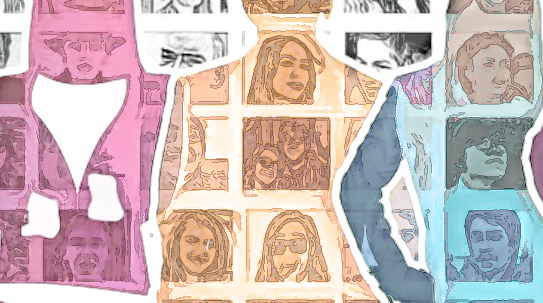-
Posts
152 -
Joined
Everything posted by alecspra
-
@smadell We ran the same test simultaneously! It seem I had the same results you had. That should strengthen our confidence that AP Develop does indeed preserve the changes made by Pure Raw dng. At least it was obvious regarding noise reduction, lens correction, and chromatic aberration. Not sure about any other changes made by Pure Raw. In your example, the with Pure Raw file also seems a bit brighter than file without Pure Raw.
-
I did quick unscientific test comparing the same image RAF file that I opened first in Pure Raw, converted the output to dng, then opened the DNG file in AP Develop, with the RAF file that I opened directly in AP Develop. I edited both files in the Develop using mostly brightness, highlights, and exposure (the image was deliberately underexposed to see how shadow noise in handled). What I noticed is as far I can tell from just a visual observation is that AP preserved the noise reduction and chromatic lens aberration of the dng file. It did not erase those changes. All in all I preferred the result of the image that was processed first by Pure Raw then tweaked a bit in AP Develop, compared to the RAF image that was fully developed in AP. The differences were subtle but at high magnification you can tell. Conclusion?: It seems AP Develop does preserve the changes made by Pure Raw. What do you think?
-
Thank you all. Lots of great insights! So it seems there are a couple of interesting questions here: Does it make sense to use 32 bit files, because it is overkill for fine art and commercial photography? I don't have an opinion on the matter because I dont know enough about the technolgy to have an informed opinion. I have however read many comments on AP videos and elsewhere that to take full advantage of HDR and tone mapping you need to work with 32 bit files. The assumption here is that this will give you more control and better results even if later on you bound the imag file range to SDR for printing or for posting online. For instance, I have been trying JR's Tone mapping macros and he clearly says that if you don't use 32 bit files you may get strange or unpredictable results. There is two different points of view her on what happens when you bring a Pure Raw DNG file into AP Develop persona. One view is that it disregards the adjustments made by Pure Raw, and the other is that it does not if you ask AP to avoid any step that would add additional noise reduction, sharpening, or lens correction. This is something I will try to test and report back here, although I think AP (Serif) should give us the official version of what happens. We shouldn't have to guess and run time consuming experiments.
-
Uauu! I didn't know that AP Develop persona disregards the changes made by Pure Raw. Ok, the dilemma is that if I do the Raw edits in Pure Raw and export the file to AP as a 16 bit tiff, I have lost the ability to take full advantage of the tone mapping macros or the tone mapping persona which work best with 32 bit files. My understanding is that I can't revert back to 32 bit from a 16 bit file.
-
My current workflow is to open my Fuji RAF files in DXO Pure Raw, let it do its magic, then export the photo as a DNG file, open it in AP Develop Persona in Adobe 32 bit HDR, do some minimal tweaking (WB, ), then continue working on the image on the Photo Persona in 32 bit HDR in order to take full advantage of JR's tone mapping macros; or alternatively go to the Tone Mapping persona before going to the Photo Persona. Once I am done with any tone mapping I convert the 32 bit file to 16 bits. The main thing I dont know is what happens when I open the Pure Raw dng file in the Develop persona: Does it cancel out the adjustments to the raw file made by DXO Pure Raw or does it make adjustments on top of that? Also, if you think the workflow I described is not optimal and there is a better way of doing it, please feel free to advise. Thank you.
-
@walt.farrell Thank you for providing this information. Much appreciated!
-
@Walt.farrell, would you mind explaining briefly how to do each of the 3 options you describe? I am especially interested in how to copy adjustments made to Raw files in the Develop Persona. Thanks!
-
@Ldina Wow! That is Masterclass. Thank you so much for taking the time to write such a well considered, clear, and concise explanation. You have made rethink some of my editing habits and assumptions. By the way, given how complex this subject is and how many AP users might be interested in reading this text, I wonder if you would consider turning it into a more widely accessible format (youtube video?). 👏 🙏
-
Let's recap because I am not following the workflow logic. 1. I develop a dng (raw) file in the Develop Persona. 2. I want to Tone Map the image so I export the developed file as a Pixel layer, keeping it in 32 bit (HDR). That file then ends up in the Photo Persona. (Of course if I want to save the file also as a Raw Layer then I would do that as well and save it for future use.) 3. This is where I am unclear about the best next step. Unless I am missing something, it seems to me that the most efficient workflow at this point is to process that 32-bit dng file in Tone Mapping without going through the additional step of exporting it as a jpg, tiff, or preferably HDR, then importing it again for Tone Mapping. I have done that and I know that works. Is that right or am I missing something?
-
Thanks Old Bruce! I tried what you suggested and it does work. What I still dont understand is why I can open dng files and do a tone mapping if I use the HDR merge function but I cannot open the same dng files if I first open them in the Develop Persona then try to open them in tone mapping? Why is the the Tone Mapping persona consider the files as a pixel layer in the first case and not a pixel layer in the second case?
-
Hi! When I develop a Raw (dng) file and want to move to the Tone Mapping Persona, I have to output the file as a Pixel layer in 32bit. I cannot use Tone Mapping if I output the file as a Raw Layer. Is that how it is supposed to work or am I missing something? If that is how it is supposed to work, should I develop the raw file in both Raw and Pixel in order to be able to go back to Raw editing later on if I want to, and use the pixel layer for tone mapping? Or is there a more efficient workflow than that? Thanks!
-

Very poor performance in large files
alecspra replied to danilius's topic in V2 Bugs found on Windows
Thanks Walt! I was having a similar problem and turning off metal acceleration (on an M1 Mac) apparently fixed the problem. Not sure why but it works. -

AI generative Fill in Affinity
alecspra replied to WMax70's topic in Desktop Questions (macOS and Windows)
Very interesting conversation! For me the most important task that I would love AI to take over is selecting the background or sky of an image. I found the process in Affinity slow and tedious especially if it is a complex image. It's not really a creative or enjoyable process so I don't have a problem letting AI make that selection for me as long as I can always make some final adjustments if needed.- 631 replies
-
- artificial intelligence
- ai
-
(and 3 more)
Tagged with:
-
Does anyone know any technique to achieve the effect shown on the picture below? I only added a cut out of the actual image but you can see that the three individuals standing in front of a gallery of images are transparent. You can see what is behind them but they are recognizable enough that you can tell they are people standing there. Hope the explanation makes sense.Thanks!
-
MEB, after tinkering with the settings on the Preferences/Performance pane as requested, I don't know what the default settings are anymore, and I don't want to reset everything back to factory default. Can you please provide a screen shot of the default settings for a Mac of the Preferences/Performance settings or point me to where I can find that information. Thank you!



